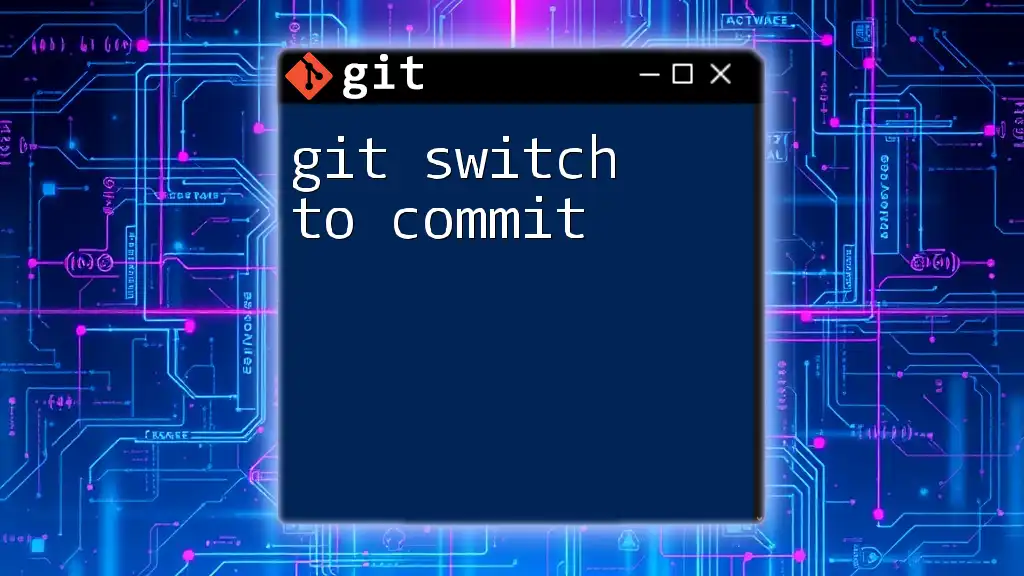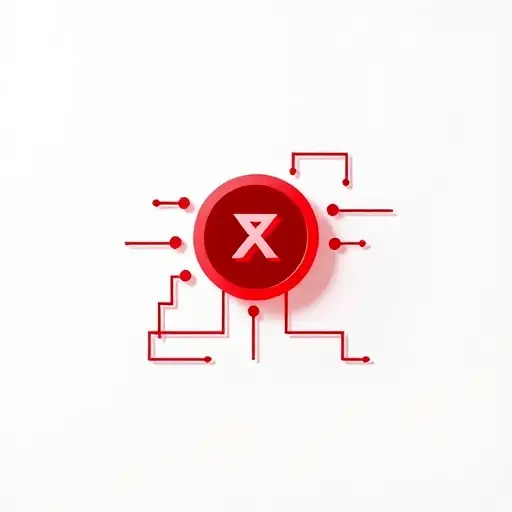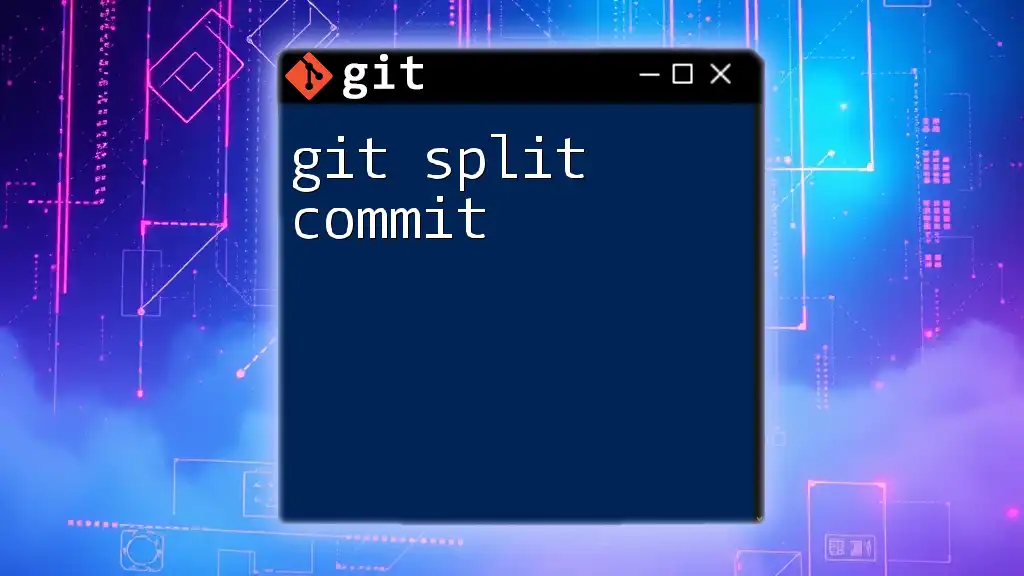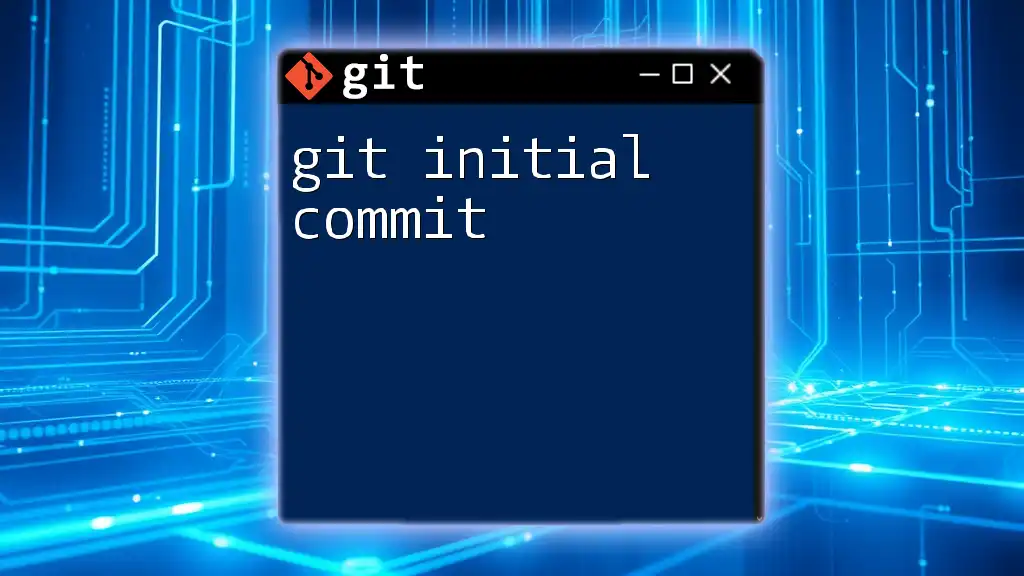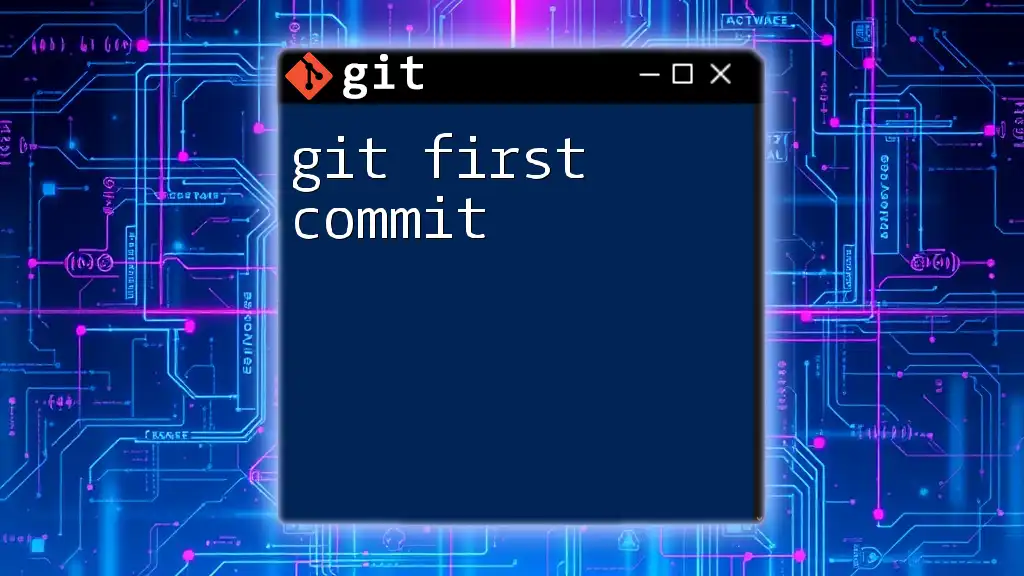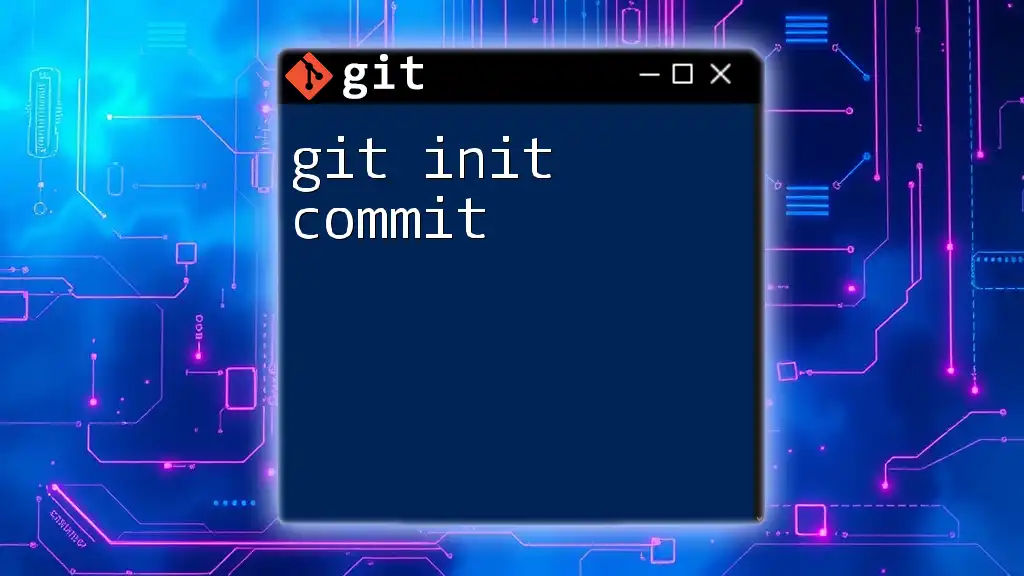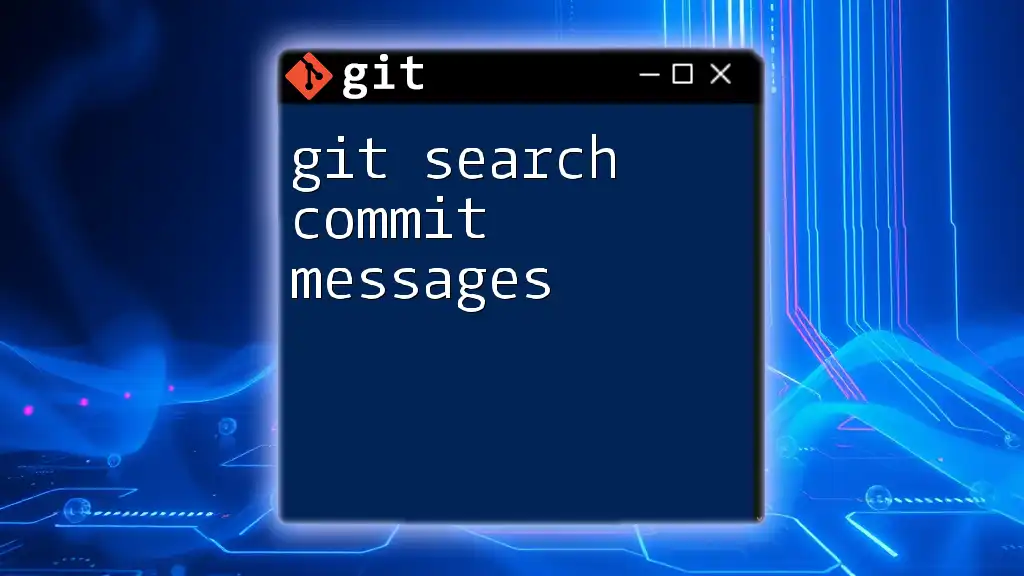To switch to a specific commit in Git, you can use the `git checkout` command followed by the commit hash, as shown in the example below:
git checkout <commit-hash>
(Note: As of Git 2.23, you can also use `git switch` for branches, but `git checkout` is more common for switching to specific commits.)
Understanding Git Commits
What is a Git Commit?
A commit in Git represents a snapshot of your changes at a specific point in time. It is a fundamental aspect of version control, allowing developers to track, document, and revert changes if necessary. Each commit creates a unique entry in the project's history, forming a tree-like structure that enables versioning.
Anatomy of a Commit
A commit typically consists of several key components:
- Hash: A unique SHA-1 identifier for the commit.
- Author: The individual who made the changes.
- Date: When the changes were committed.
- Message: A short description of what the commit includes.
You can view your commit history by running the following command:
git log --oneline
This command will output a concise representation of your commits, providing insight into the history of your repository. Each entry will typically display the commit hash, author, date, and the associated commit message.
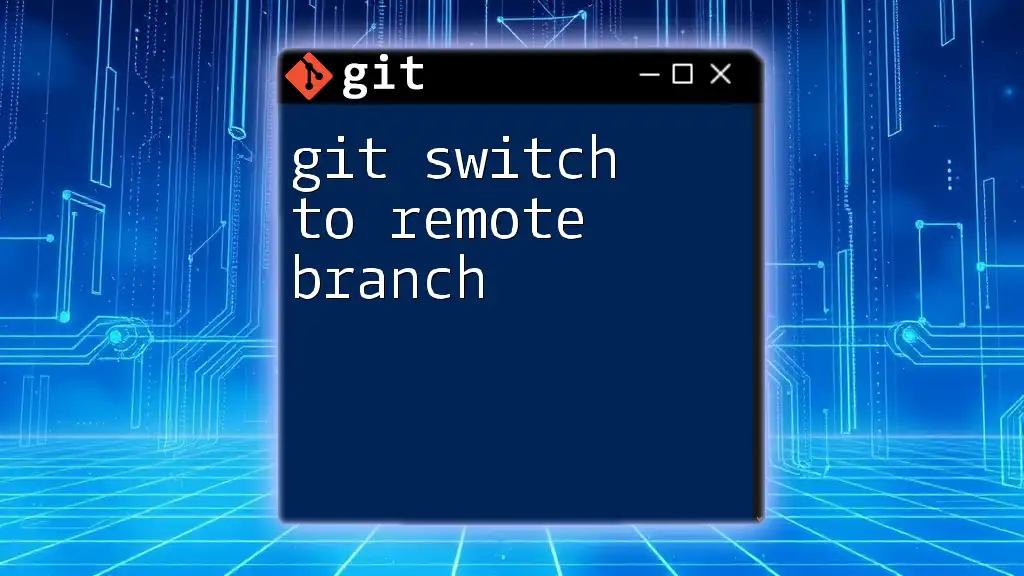
Introducing `git switch`
What is `git switch`?
The `git switch` command is a newer addition to Git, introduced to simplify the process of switching branches and commits. It provides a more intuitive and user-friendly interface compared to the older command, `git checkout`, which had various functionalities, making it easy for users to misunderstand its purpose.
When to Use `git switch`
You would typically use `git switch` when transitioning between branches. However, switching to a specific commit using `git switch` allows you to analyze a previous project state, helping with debugging or testing. For instance, when you want to switch to a branch named `feature-branch`, you can execute:
git switch feature-branch
This command clearly indicates the intention to switch to the specified branch.
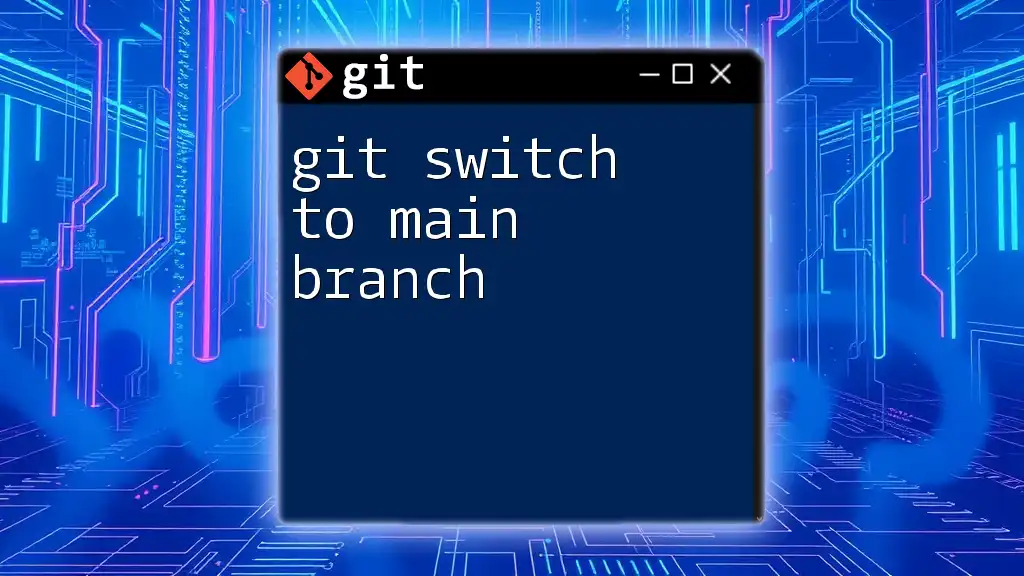
Switching to a Specific Commit
Why Switch to a Commit?
Switching to a commit is particularly useful for scenarios such as debugging or testing older features. By reverting to a previous commit, you can observe the state of your project without the influence of later modifications, effectively isolating the cause of any bugs or issues.
Using `git switch` with Commit Hash
To switch to a specific commit, use the commit hash as follows:
git switch <commit-hash>
Replace `<commit-hash>` with the actual hash of the commit you wish to explore. You can find the hash through the command `git log`, which shows the commit history along with their hashes.
Working in a Detached HEAD State
Understanding Detached HEAD
When you switch to a specific commit, Git places you in what is known as a detached HEAD state. This means that instead of pointing to the latest commit on a branch, your HEAD now points directly to a specific commit. While in this state, you can view and test your project based on the state of that particular commit.
How to Handle Detached HEAD
Working in a detached HEAD state is perfectly fine for exploration; however, any commits made in this state will not be associated with any branch. To save changes, you should create a new branch from that commit:
git switch --detach <commit-hash>
This command allows you to start afresh from that commit while avoiding uncommitted changes that won’t have a branch reference.
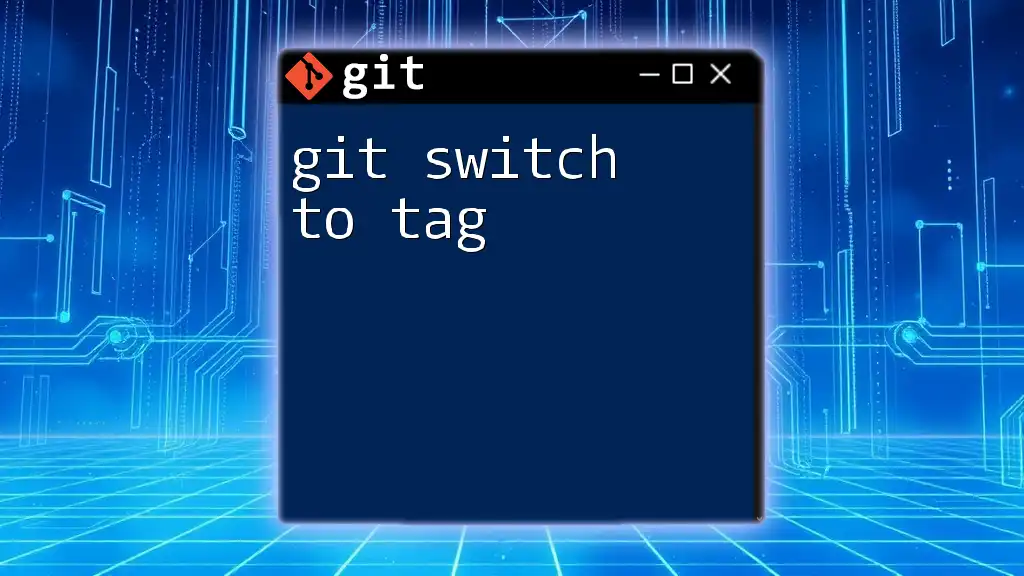
Practical Examples
Example 1: Debugging a Bug
Imagine you have identified a bug introduced in a later commit. Here’s how to switch back to an earlier commit to isolate the bug:
-
Use `git log` to list your commits and identify the relevant commit hash.
-
Execute:
git switch <previous-commit-hash> -
Once switched, run the application to verify if the bug persists. If it does not, you’ve successfully identified the commit that introduced the bug.
Example 2: Testing a Feature
Let’s say you want to test a feature from an earlier commit before it got altered. You can do the following:
-
Checkout your commit history with:
git log --oneline -
Identify the commit hash and switch using:
git switch <feature-commit-hash> -
Conduct your tests in this commit context, giving you insights on how the feature performed at that time.
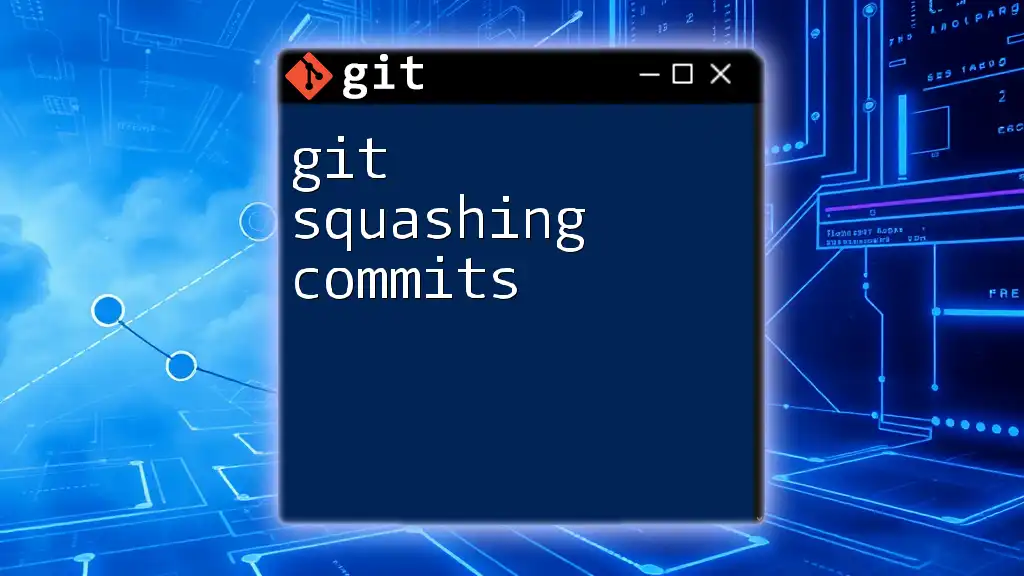
Best Practices for Using `git switch`
Keep Your Workspace Clean
Prior to switching commits, it is best practice to commit or stash any unsaved work to avoid conflicts or loss of changes. You can stash your current work using:
git stash
This command saves your changes temporarily, allowing you to cleanly execute the switch.
Frequently Check Your Commit History
Before switching to a commit, ensure you have a firm grasp of the commit history. This understanding will help you select the appropriate commit you wish to revert to or explore. Utilize:
git log
Use Branches for Experimentation
Instead of working directly off a commit, consider creating a new branch. This way, any changes you make can be preserved and later merged back into your main line of development if desired. You can create a new branch from a commit using:
git checkout -b new-feature
This command not only allows you to base your work on a specific commit but also keeps your main branch clean and stable.
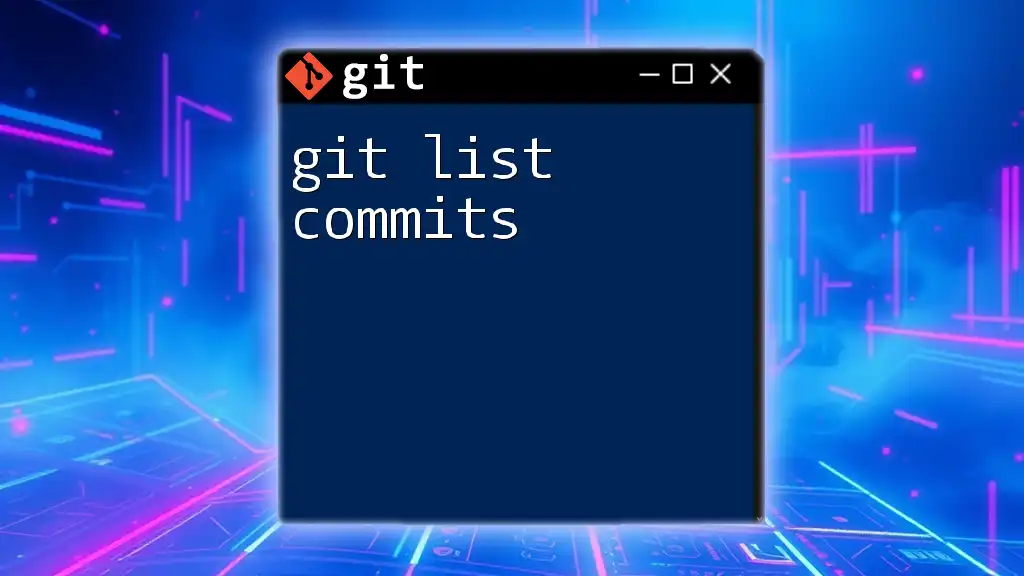
Conclusion
Utilizing `git switch` effectively empowers you to manage your project history with clarity and precision. By mastering the ability to switch to specific commits, you can debug, test, and experiment efficiently in your development workflow. Regular practice with these commands will enhance your command of Git and ensure a smoother development process.

